Opinion
The useful and the useless

“All art is useless, because its aim is simply to create a mood” – Oscar Wilde
By Prof. Kirthi Tennakone
ktenna@yahoo.co.uk
Today, our society focuses its attention solely on useful things, leading to material and monetary gains, envisaged advantages, or accomplishing plans. The work we do at home, in the workplace or at school, the policies we frame and the social activities we engage in are primarily intended for that purpose. And we subscribe to charity and alms, expecting dividends in a life after death.
We rarely go beyond the routine and the system discourages such deviations. We are reluctant to embark on seemingly useless and unprofitable things and fear undertaking challenges.
When children play and meddle, parents tell them all this is useless fooling, go and follow your lessons. When they struggle to secure a job after finishing school, the same parents would remark, all they had learned in school is useless.
Education pundits accredit unemployment and the absence of innovation in the country to useless subjects in the curriculum and propose reforms.
Despite the crazy emphasis on utility, we remain weak in performing useful tasks and producing useful goods.
Are we on the wrong track? History tells us embarking on outwardly useless things is indeed the secret behind transformative innovations and human intellectual advancement.
In 1872, an unassuming lad named Paul Ehrlich entered the Medical School in Strassburg, Germany. One day, in anatomy class, instead of dissecting corpses as instructed, he was coloring human tissue and looking at them through a microscope.
When the professor asked him what he was doing; he replied, ‘I am fooling’. The professor, without pulling him up said, ‘Continue your fooling’. Facing many hurdles because of his attitude, Ehrlich completed his medical degree. The faculty noted he is an unusually talented person and would not choose to practice as a doctor. As expected, he continued research making groundbreaking discoveries. Paul Ehrlich is regarded as the father of pharmaceutical science and chemotherapy. He was the first to introduce the far-reaching hypothesis that chemical substances can be synthesized, which when delivered to the body combat disease. Ehrlich earned the Nobel Prize in Medicine in 1908.
The above story and many other similar anecdotes were cited by the American educator, Abraham Flexner in his book “The Usefulness of Useless Knowledge “. Flexner, who began his career in 1903 as a teacher in elementary school with a bachelor’s degree in classics, later turned out to be a vociferous critic of higher education in the United States, especially medicine. He pointed out that the standard of medical education needs to be elevated making it rigorously science -based. He vehemently opposed the provision of research funding to universities and research institutions considering only the utility value, pointing out curiosity- driven investigations, believed to be useless by many, were the ones that transformed the world. He worked hard to establish the Institute of Advanced Study, Princeton and served as its first director. Flexner was instrumental in inviting Albert Einstein and several other European scientists and mathematicians to the Institute.
From time to time, people of the highest intellectual acclaim have reminded the world of the virtue of pursuing novel things ostensibly useless.
George Fitzgerald, an eminent Irish physicist who made important contributions to the science of radio wave propagation, wrote a letter to the Editor of the Journal, Nature in 1892, titled “The value of useless studies”, where he stated, “If universities do not study useless subjects, who will?” Once a subject becomes useful, it may very well be left to schools and technical colleges.”
In his analysis of social issues, Karl Marx declared, “Production of too many useful things results in too many useless people. The improvements in the quality of life in relation to technological advancement prove his assertion is not entirely correct. Yet what Marx said warns humanity of the repercussions of useful innovations.
Smartphones are undoubtedly useful. However, the youngsters addicted to them may perform poorly, because they interfere with the natural process of learning via healthy environmental and social interaction. The same applies to innovations in AI. Students who use chatbots for writing essays and solving mathematical problems, get deprived of the essential brain exercise needed to become more useful – you are being useful to yourself and to society.
In the present-day context, it would be more appropriate to say: “The engagement in useful things all the time decreases our usefulness”.
The usefulness and uselessness have crept into our education and planning more than any other sector. Until about three decades after independence, education philosophy in general was more balanced, emphasizing both arts and science. Later, the arts got branded as useless and science useful.
Oscar Wilde, one of the greatest artists (playwright and poet) once said “All arts is quite useless”. When someone asked him what he really meant, he replied, “Art is useless because its aim is simply to create a mood. It is not meant to instruct, or influence action in any way. It is superbly sterile, and the note of its pleasure is sterility.” The usefulness of the arts is their practical uselessness!
A good mood arouses emotion, serenity, imagination, and empathy, qualities even more useful than most useful material things. Our failure to inculcate these qualities resulted in rampant corruption seen everywhere. And other weaknesses, including our lag in delivering innovations, because the above qualities foster creativity and the spirit of inventiveness. A trait common to men and women who led the way for modern utilities, we enjoy!
Years ago, a team self-appointed to make suggestions to revise the A-level curriculum identified several subjects as redundant and useless. Among them were physics and Sanskrit. They also recommended a pass in physics should not be a requirement to enter medical schools in our country. The author commented that Sanskrit is deeply inbuilt to our culture, quoting the Indian physicist CV Raman, who said, “It is wrong to say Sanskrit is dead; it is very much alive, and it embodies everything we call ours. And
if a pass in A-level physics is made non-compulsory to enter medical schools, patients should be cautious in visiting doctors without a pass in this subject”.
In education and research, we are inclined heavily towards practical aspects, believing theory would not help, but in vain we continue to be poor in original, practically useful ideas and their implementation.
A technology stream was added to A-level, claiming physical and bioscience courses are theory- biased and not conducive to practical work. However, the real problem of the GCE A/L science students is they are deficient in theory. And for that reason, they cannot adapt to innovations. What they learn, mainly from tuition classes, are methods of answering questions in a disconnected approach. The coherence of theories and their value in foreseeing innovations is not emphasized.
Leonardo da Vinci (1452 – 1519), one of the greatest innovative minds of all time said: “He who loves practice without theory is like a sailor who boards ships without a rudder and compass and never knows where he may cast”. He made this statement when scientific theories were not as ripe as today to make predictions and envisage innovations. Though not implemented, the basic science policy drafted by the National Science and
Technology Commission (NSTEC) highlights the value of basic science and theory, stating: “Basic science is the study aimed towards the advancement of scientific theories for the understanding of natural phenomena and/or making predictions. It is an integral part of all development programs. For any country, the creation of a strong foundation in basic scientific research is a prerequisite for applied research, innovations, and economic growth. There cannot be applied research or innovations without basic research. Curiosity-driven basic research influences all human endeavors, including rational thinking. The benefits of basic science research are gained through the dissemination of fundamental knowledge and principles of science”.
Universities are free to do either useful or useless research and teach disciplines belonging to both domains – permitting teachers and students to be critical and dream. Unfortunately, our universities tend to focus on applied aspects, neglecting the basics, theory, and arts. Nevertheless, no signs of increased productivity, and students turning more conventional or ideological than critical.
Strangely, the Institute of Fundamental Studies, established exclusively to promote basic science and theoretical studies has taken a retrograde step grossly deviating from its mandate and entertaining practical projects best carried out elsewhere without duplications. Sri Lanka is full of untapped exceptional talent. Allowing and providing opportunities for our younger scientists to pursue truly fundamental research would foster science and technology in this country.
We need to be exemplary as the professor who supervised Paul Erlich. Recognizing talent and potential, he permitted Ehrlich to play aimlessly in the anatomy lab. When new scientific and technological fashions originate abroad, we rush to pick them up expecting immediate economic gains. Earlier, it was biotechnology, then nanotechnology and today, AI. To reap the fruits of these trends and create our own fashions, we need minds turned sophisticated by doing useless things as well. Munidasa Kumaratunga said a nation that does not create will not rise. Creations often originate from indulgence in activities seemingly useless.
Opinion
Gnana Moonesinghe- an appreciation
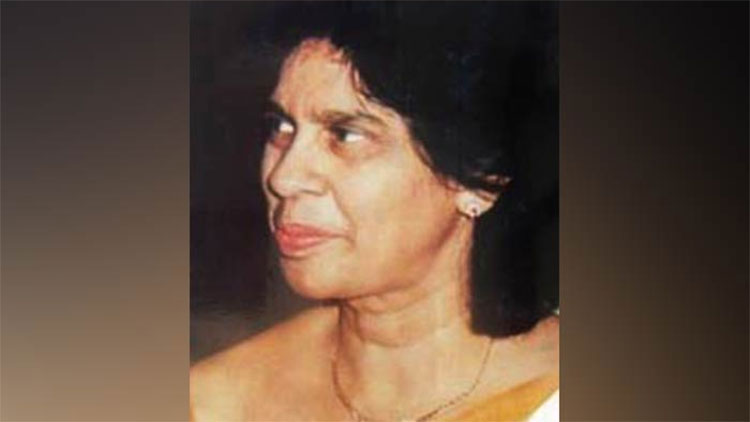
It was just over one month ago that Gnana Moonesinghe departed from this world after having lived a very fruitful life on this earth. It was indeed a privilege that Mallika and I came to know Gnana after we moved into Havelock City. During that short period, we became very close friends, along with another mutual friend of ours, Dr. Disampathy Subesinghe, who, too, was living in the same Tower after having come from the United Kingdom. Unfortunately, Dr. Subesinghe pre-deceased Gnana.
Gnana was a graduate of the University of Ceylon, Peradeniya having been at Peradeniya during the halcyon days of that University.
She tied the nuptial knot with Mangala Moonesinghe who was a very respected politician and who served as our High Commissioner in London and New Delhi. She was an exceptional hostess while being the wife of the High Commissioner. It was a very interesting coincidence that our second son, Anuke, had won a trip to New Delhi having won an All-Island essay competition about India while still a schoolboy. The team had met the High Commissioner and Gnana when they attended a reception hosted at the High Commission, where Gnana had been an exceptional hostess to the young boys.
Gnana was a member of many organisations and played an important role in all of them. In addition to these activities, she contributed to newspapers on varied subjects, especially relating to good governance and reconciliation. She was a keen player of scrabble and rummy with her friends and of course entertaining them to a meal if played at her home.
It was while in New Delhi that Gnana wrote and published a book titled “Thus have I heard…”in the year 2009 and she presented a copy to me). This book gives lucid descriptions of the Buddhist teachings of the Buddha and the places of interest in India with historical descriptions of what transpired in each place.
Gnana had brought up a very good daughter Avanthi and a son Sanath. She doted on her grandchildren and in turn they loved her. It was Avanthi and her husband, Murtaza who looked after Gnana during the last stages of her life.
We will miss Gana’s hospitality, soft spoken conversations, and the love that she used to emanate towards her friends.
HM NISSANKA WARAKAULLE
Opinion
Manifestos, promises and failures
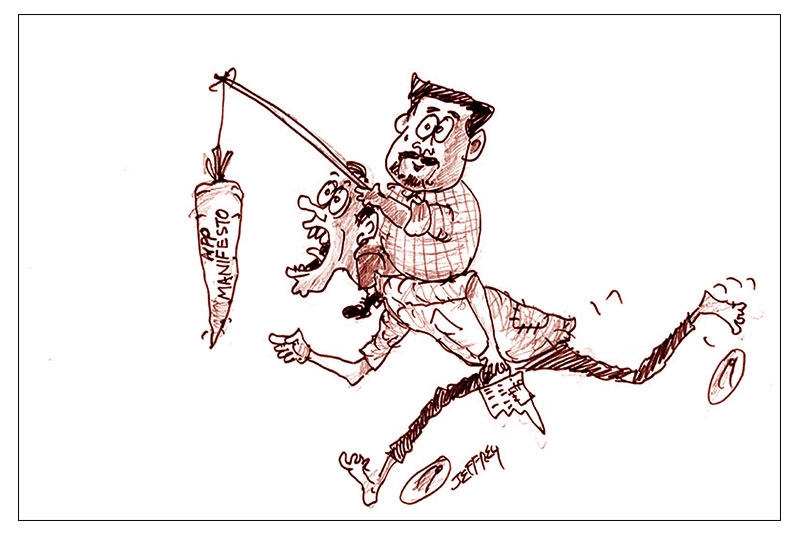
The current government’s spectacular electoral success, was in essence a clear rejection of the chaos, incompetence and corruption, that were hallmarks of the traditional parties that have exercised dominant electoral power since Independence in 1948.
The remarkably successful Aragalaya was an emphatic rejection of the ‘old’ parties and hopes of a refreshingly enlightened “System Change”. This was the unspoken reliance on the NPP, (a lightly disguised JVP).
The unsavoury history of the unimaginable and intolerable violence of the JVP, matched by an equally cruel retaliation by Government forces, thankfully faded out around the last decade of the 20th century, is still a feared eventuality, in the memories of those who experienced the nightmare. Maybe, most of the currently active youth, had not even been born at the time. But the fear lingers. It is not unusual that the current NPP leadership, is none too eager to remember that period of history, nor to market this ancestry.
The shift into oblivion of the LSSP, is perhaps a signal that the era of sloganeering and “catch phrases of Marxist verbiage” as electoral currency, is now past.
One hopes that a home-grown model, based on the rugged strengths of rural society, is much more marketable, and representative of the Swabasha nourished, youth leadership. The leader in this transformation, AKD stamps his class with remarkably effective oratorical skills. The ready recall of incidents and instances, to follow logical trends of thought, and the ease with which he changes style and substance, to suit his varied audiences, is simply brilliant. This, with not a note (or prompt) in support, nor an hour to craft his fresh delivery to a new audience. The massive crowds that attended the pre-election rallies, seem to have morphed significantly into votes. The 150-odd seats secured, would have surprised even the most committed supporters. However, can they “walk the talk” of electoral rhetoric?
It also seems that even the few of the Old Guard, possibly crippled by left wing ideology, have taken on a new stance, with emphasis on existing local reality.
The hopes of a majority, enthused by the change of attitudes, professionalism and integrity of the new dispensation, will endure and thrive. The early signs are positive, but this leopard may well change its spots.
The claim that the promised changes, especially of seizure of the proceeds of crime and lawful punishment of fraudsters, is demonstrably slow. There must however be much discomfort among these rogues, that the handcuffs to adorn their wrists, may not be too far away. The President assures the people that the seeming delay, was to allow irrefutable and water-tight evidence to be assembled for successful prosecution, and to eliminate the all too frequent instances where the accused are acquitted and released.
It is increasingly evident that the roots of criminality run deep and far, and even the institutions designed to aid in successful probes, can be compromised by massive enticements, which would be easily accommodated, within the sheer size of the sums involved.
The trails may be clear to the optimistic, but the craftiness of seasoned rogues ensures that although the truth will eventually prevail, it may be a very deep dig. If the lack of “legal provision” is a real impediment, the present parliamentary majority should facilitate speedy correction. However, in many instances, it seems apparent that it is not the lack of laws, but the tardiness in acting where sufficient laws already exist is the problem.
To return to the matter of lying or otherwise distorting reality, there seems to be a kind of permissible and generous threshold, beneath which unreal extravagance can be concealed. If conscience overrides mere legality, and zero tolerance of fraud prevails, there will be public aversion towards any departures from common decency and rectitude.
Credit will be its reward, for the “Clean Sri Lanka” initiative if it goes beyond mere elimination of environmental pollutants and encompasses restoration of moral and ethical standards as well.
But, are we not presently guilty of a shallow pretense of religiosity, when our Constitution urges (or permits), the creation of Ministries of Buddhism and those charged with the “protection” of Christian, Muslim or Hindu affairs? This is hypocrisy of a high order especially in a country, wedded to concepts of equality, compassion and fairness in a pluralistic community. It is infinitely easier to preserve unity in a mixed populace, than to repair a fractured one. As one of our political leaders asserted, in a different context, “We have scrambled the egg and invite any to try “unscrambling it”.
As the late D. M. Jayaratne, as PM, as well as Minister of Buddha Sasana, saw no qualms about declaring that “Only idiots would believe Election manifestos, when their intent was merely to deceive voters into voting for them”. One has to trust that this still prevails. We remain undaunted, in a country that prides itself in a religiosity cemented within a constitution which permits such divisive content.
Dr Upatissa Pethiyagoda
Opinion
Learning from global models to address flooding and water shortage in Sri Lanka

by Sudharman Siripala
Sri Lanka is grappling with the increasing threat of climate change, which has led to unpredictable weather patterns. The country faces a dangerous combination of flooding in some regions and water shortages in others, a situation exacerbated by shifting rainfall patterns. Rivers originating in the Central Hills, such as the Mahaweli, Kalu, and Kelani, flow through much of the country, but these water sources are not being distributed evenly. Districts like Monaragala and Hambantota, located in the dry zone, are experiencing severe water shortages. To address this challenge, experts suggest the development of an interconnected river system to harness excess water during floods and redirect it to drier areas, ensuring a year-round water supply for agriculture and daily use.
Global Case Studies in River Management
Several countries facing similar water-related challenges have implemented successful water management systems that Sri Lanka could adapt to its unique circumstances:
The Netherlands – Room for the River Programme
The Netherlands, a country prone to flooding, widened its rivers and relocated dikes to create floodplains. This approach allows rivers to overflow without damaging urban areas, while preserving water flow and natural habitats. Sri Lanka could apply this concept by designating specific riverbank areas for temporary flood storage.
China – South-North Water Transfer Project
China’s massive project channels excess water from the flood-prone Yangtze River to drier northern regions. This system of canals and reservoirs could inspire Sri Lanka to divert water from rivers in the Central Hills to drier areas in the south and east.
Bangladesh – River Interlinking Projects
Bangladesh has implemented river interlinking projects to redistribute water from flood-prone rivers, such as the Brahmaputra, to drier regions. Sri Lanka could link its major rivers like the Mahaweli and Kelani to smaller rivers in water-scarce districts to balance water distribution.
India – National River Linking Project
India’s National River Linking Project connects major rivers to manage both floods and droughts. Sri Lanka could use similar strategies, connecting rivers around the 500-foot contour line in the Central Hills to help distribute water more effectively.
United States – Mississippi River and Tributaries Project
The Mississippi River system combines levees, floodways, and diversion channels to manage flooding. Sri Lanka could adopt similar flood-control measures in vulnerable river basins such as the Kelani and Kalu.
Japan – Underground Reservoirs and Flood Channels
Japan’s G-Cans Project in Tokyo channels excess water into underground reservoirs to prevent urban flooding. A similar underground system could be implemented in Colombo and other flood-prone cities in Sri Lanka.
Singapore – Marina Barrage
Singapore’s Marina Barrage serves as both a flood control measure and a water supply resource. Sri Lanka could develop similar systems to control flooding in urban areas and ensure water availability during dry spells.
Thailand – Chao Phraya River Basin Management
Thailand uses diversion channels in the Chao Phraya River Basin to prevent flooding in Bangkok and direct water to agricultural areas. Sri Lanka could replicate this by creating diversion channels to supply water to its agricultural zones.
Actionable Solutions for Sri Lanka
Develop an Interconnected River System
Establish water diversion channels along the 300-500 meter contour lines of the Central Hills to capture excess rainfall during floods and redirect it to drier areas.
Build Reservoirs and Storage Tanks
Construct reservoirs to store diverted water, ensuring a steady supply for agriculture and domestic use. Sri Lanka has around 14,000 ancient tanks out of 30,000 that could be revitalized for this purpose.
Improve Urban Flood Defenses
Drawing inspiration from Japan and Singapore, build underground reservoirs and flood channels in cities like Colombo to mitigate urban flooding.
Strengthen Watershed Management
Restore natural floodplains and create wetlands to absorb excess rainwater, as seen in the Netherlands, helping to reduce flood risks.
Encourage Public-Private Partnerships
Foster collaboration between the public and private sectors to fund large-scale water management infrastructure, leveraging models from China and the United States.
Leverage Technology
Utilise modern forecasting and real-time water management systems, similar to those in Bangladesh and Thailand, to monitor water levels and manage river flows dynamically.
International Collaboration
Form partnerships with countries that have successfully implemented flood control and water management systems to share expertise and technology.
Sri Lanka’s dual challenges of flooding and water scarcity, compounded by climate change, require immediate action. By developing an interconnected river system and learning from successful global water management models, Sri Lanka can mitigate the effects of floods while ensuring a sustainable water supply for agriculture and daily life. It is crucial for the country to act now, as these solutions have the potential to transform Sri Lanka’s water management system for the better.
Sudharman Siripala Managing Director of Geoinformatics Group and a Registered Licensed Surveyor, specializes in geo-spatial applications. He also serves as a freelance value chain consultant for Vivonta Green Tech Consultants (www.vivonta.lk)
-

 Sports2 days ago
Sports2 days agoSri Lanka’s eternal search for the elusive all-rounder
-
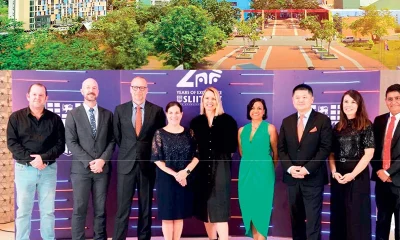
 Features6 days ago
Features6 days agoCelebrating 25 Years of Excellence: The Silver Jubilee of SLIIT – PART I
-

 Business6 days ago
Business6 days agoCEB calls for proposals to develop two 50MW wind farm facilities in Mullikulam
-

 Business4 days ago
Business4 days agoAIA Higher Education Scholarships Programme celebrating 30-year journey
-
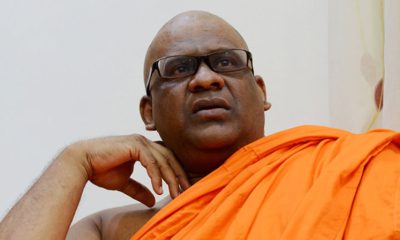
 News3 days ago
News3 days agoGnanasara Thera urged to reveal masterminds behind Easter Sunday terror attacks
-
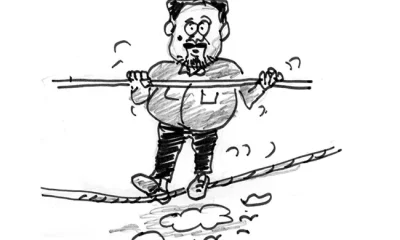
 Features6 days ago
Features6 days agoNotes from AKD’s Textbook
-
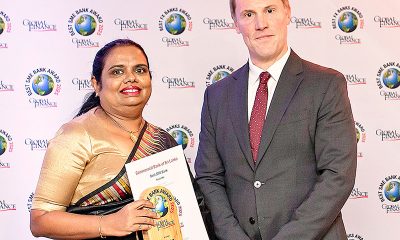
 News2 days ago
News2 days agoComBank crowned Global Finance Best SME Bank in Sri Lanka for 3rd successive year
-

 Features2 days ago
Features2 days agoSanctions by The Unpunished











